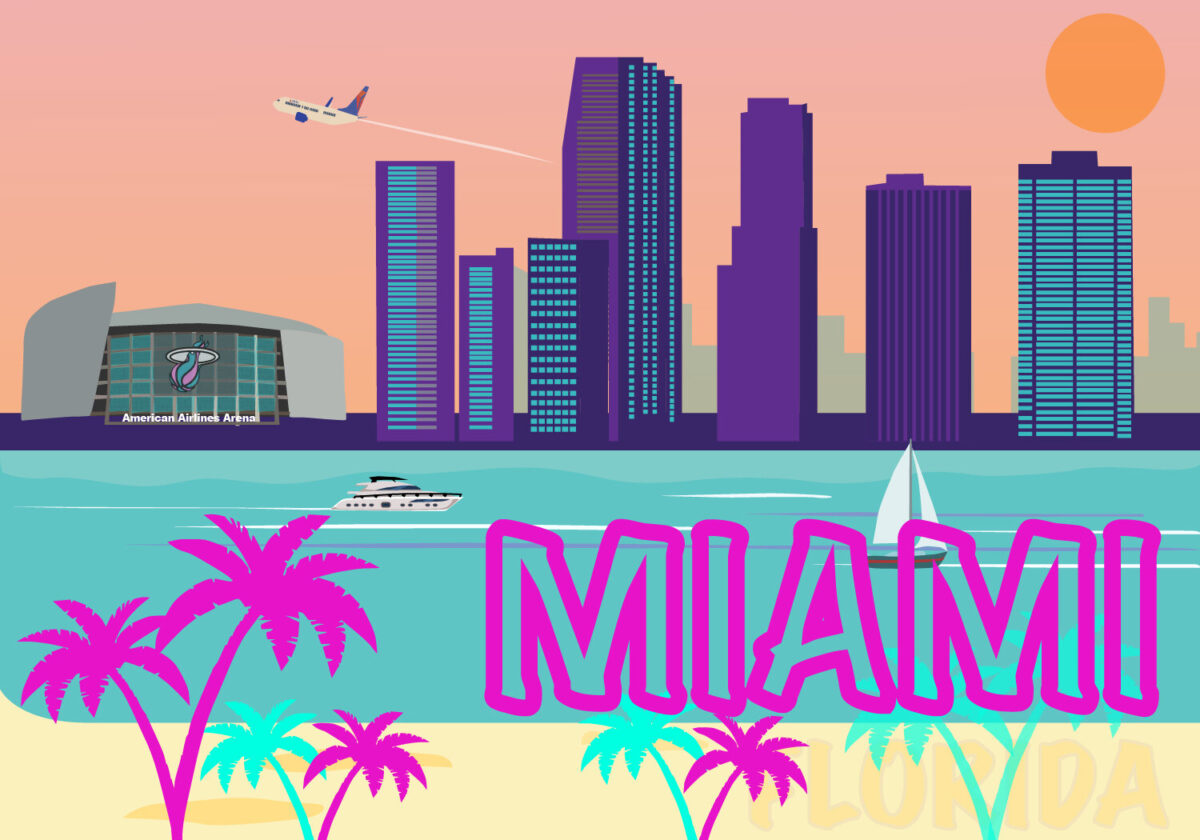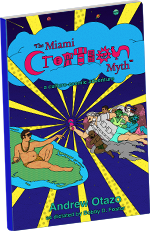
The alarm sounds, jolting me out of sleep. I must’ve hit snooze a few times because my phone shows that I have exactly one hour to get from my apartment in Downtown Homestead to my job in Brickell, 30 miles away. I smile. No need to rush.
I brush my teeth, pull on work clothes, grab a breakfast bar, and am out the door in 15 minutes. A brisk, five-minute walk to the Metrorail is the most pleasant part of my day. Shade trees block the rising sun, lowering the temperature significantly. Cyclists in protected bike lanes whiz by, also on their way to the station.
The escalators and elevator to the platform work as smoothly as ever. You’d think the Miami-Dade Transit Authority was run by Swiss engineers because I’ve never seen any of their facilities break down.
The station sign says the next express train to Brickell is due in 3 minutes. They run like clockwork every five minutes, so even during rush hour, there’s plenty of space in the cars. While I wait, I scan the horizon, which has become completely bereft of powerlines since FPL was abolished. Instead, rooftop solar panels on nearly every building provide free, distributed electricity to all businesses and residential housing.
The train pulls up. I walk in, take a seat, and accelerate northward.
To my west, the Everglades reflects sunlight like a massive emerald sheet. Most of the canals and dikes blocking the southward flow of water were long since removed, revitalizing the Southern Everglades after decades of mismanagement. Black bears, deer, foxes, otters, and even the once-elusive Florida panther are now regularly sighted neighbors. With the influx of fresh water from the north, Florida Bay quickly recovered and is full of manatees and dolphin pods.
To the east, the train parallels what used to be the Ronald Reagan Turnpike, now an enormous linear park. 20 miles of bike and walking paths weave through rewilded hardwood hammocks populated with Dade County pines, their stately canopies floating above groves of sable palm and coco plums. Dozens of public basketball courts, soccer fields, and open-air amphitheaters echo with the sounds of families laughing, playing, and walking their dogs.
Along with the Palmetto and Dolphin Expressway, these former highways form the world’s largest converted greenway—a model for cities wishing to replicate Miami’s astounding success. Simply put, now that the Magic City has such an efficient public transit system, most residents don’t need their cars, freeing huge tracks of land for public development. The street grid still exists, of course, but the majority of Miamians choose to ride the Metrorail’s nine lines or the countywide system of rapid bus routes. Passengers who need to travel farther can use the high speed rail system to reach Orlando in one, Jacksonville in two, and Washington D.C. in five hours.
The train speeds through apartment blocks strategically placed at transportation nodes in Cutler Bay, Palmetto Bay, Pinecrest, and South Miami. Ever since the county adopted zoning laws necessitating that all new developments be composed of at least 50% affordable units, our housing shortage has all but disappeared.
Biscayne Bay shimmers to the southeast as the train cruises through Coconut Grove. Since cracking down on fertilizer runoff and construction silt plumes, Biscayne Bay’s dying sea grass beds rebounded spectacularly. Several miles offshore, the Florida Coral Reef—second in size only to the Great Barrier Reef—has been replanted with colonies genetically designed to withstand higher oceanic temperatures, filling Miami’s waters with gigantic shoals of fish not seen in a century. Meanwhile, the bay’s coastline is ringed by a living seawall of mangrove forests and oyster reefs, protecting infrastructure from storm surges, providing habitats for millions of seabirds, crustaceans, and marine mammals, and driving a booming ecotourism sector.
The Metrorail slows as it approaches Brickell. On the sidewalk below, people from countries around the world mingle and jostle past each other. Miami remains a welcoming city for all seeking refuge or a new life. Those previously classified as “undocumented” are now on a structured path to citizenship. All are treated with respect and provided with public services in return for the immeasurable value they bring to the city.
To the north, Overtown, Little Havana, Little Haiti, Liberty City, and Allahpattah are recognized as invaluable heritage sites, protecting their residents from Wynwood’s and Brickell’s creeping gentrification. Noting the importance of maintaining the neighborhoods’ cultural integrity, local governments invest in keeping residents in their homes and provide seed funding for entrepreneurial ventures, transforming historically marginalized communities intro thriving business districts and tourist attractions.
The train finally arrives at Brickell Station. A forest of steel and glass concrete office towers rise around me. The transplanted corporations residing within committed to hiring at least 30% of their employees from local communities, integrating previously maligned tech and professional services into Miami’s social fabric and providing its residents a pipeline to acquire good, high-paying jobs. Many of those companies’ alumni used their acquired expertise and networks to create a truly native ecosystem of startups and rapidly growing private ventures.
With ten minutes to spare before I’m expected in the office, I take a leisurely stroll down Miami Avenue, enjoying the bustle and energy of a truly world class city, an example of what can be achieved with a combination of visionary public leaders, an engaged civil society, well informed constituents and OH MY FUCKING GOD I AM CRASHING HARD FROM THIS AYAHUASCA TRIP. Why am I lying in a Flanigan’s back alley? Where the hell are my pants?? Where’s my phone?… probably with my pants… I think I’m going to be sick… Was I hallucinating about a Utopian Miami? Who cares! God, my head hurts. I’m going to throw up. Yep, I just threw up.
If you like our stories, buy our book!
 Andrew Otazo
Andrew Otazo
'Miami Creation Myth' author Andrew Otazo has advised officials on Cuba policy, worked for the Mexican president, fired a tank, and ran with 30lbs of trash.
Check out the first free chapter of Andrew’s upcoming book here.




